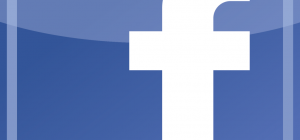 One of the biggest challenges for businesses nowadays is processing an infinite amount of data to provide valuable insights and real-time visibility. Companies need to use tools that help them make informed decisions and have a constructive impact on their organization.
One of the biggest challenges for businesses nowadays is processing an infinite amount of data to provide valuable insights and real-time visibility. Companies need to use tools that help them make informed decisions and have a constructive impact on their organization.
An HR dashboard is an advanced business intelligence tool that helps businesses trace, analyze, record, and report HR KPIs. It’s also essential to improve talent management processes and to optimize workplace management.
By using interactive data visualizations and more intelligent analytics, businesses can track employees’ performance, enhance overall processes, and improve employee retention. Here are some HR dashboard examples and benefits that can improve the operations of your business and help it reach new heights.
Examples Of HR Dashboards
HR dashboards are sophisticated analytics tools that have a range of capabilities. You can customize dashboards to make them more suitable for your business. Below are some of the most popular HR dashboard examples.
1. HR Health and Safety Dashboard
HR health and safety dashboard is one of the crucial dashboards to maintain employee retention. It tracks key events in employees’ health and safety, records them in one place, and updates them regularly. It gives a dynamic overview of important health and safety metrics, determines the effectiveness of the health programs in place, and helps to identify improvement areas.
2. HR Training Dashboards
Research suggests that employee training and retention have a strong link because employee development efforts increase employee effectiveness. HR training dashboards record and compare budget information, keep track of the number of participants, and provide actionable insights.
3. HR KPI Dashboard
The most important key performance indicators of the HR department are employee expense ratio, employee expense, revenue per employee, training expense, number of full-time employees, number of employees, cost per hire, average absence rate, overtime hours, number of contractual employees, training hours, and overtime hours.
HR KPI dashboard assists in tracking these essential performance indicators and helps you easily interpret these major aspects related to your organization. It compiles all the data in one place, which makes reporting more conclusive and compelling.
4. HR Metrics Dashboard
HR executives need to have an updated overview of common performance indicators to quickly understand the critical characteristics of the organization and make decisions. To maintain a balanced and diverse workforce, HR needs to have a dynamic visual representation of the organization’s workforce and business situation.
HR metrics dashboard allows HR to monitor the overall progress, deeply analyze the status of each performance indicator, and make an informed decision.
5. HR Expense Budget vs. Actual Dashboard
Monitoring changes in the budget is crucial for any department. The HR expense budget vs. actual dashboard helps to compare the actual expense incurred against the planned budget. This assists the organization in improving its processes through better planning and monitoring. It also keeps them updated about any variability in the budget and in implementing any adjustments.
Benefits Of Using An HR Dashboard
As highlighted through the examples, the key capabilities of HR dashboards allow companies to manage information, monitor changes, and track problem areas. Below are all the benefits that HR dashboards provide.
Employee Retention
Various HR dashboards have essential features that concentrate on the development of employees. An organization’s focus on its employees’ performance and growth can motivate employees to drive improvements. It can also help with the success of change management without the loss of any key employees.
Improved Transparency
The use of professionally designed dashboards helps to identify problems in an effective and transparent manner. The HR metrics provide a complete overview of the current business strategy and situation, enabling the HR department to get a clear picture of the key persons and processes driving the company’s growth. Increased transparency also means clear and faster internal communication.
Better Communication
HR dashboards improve processes by bridging communication gaps and providing visual representations of all the relevant updates. They can show employees that the organization cares about them, invests in their growth, and considers them an important stakeholder of the company. It also enhances efficiency and makes the workforce more productive.
Automated Reporting
All big organizations have realized that simple reporting is no longer effective, and they need to move towards automated reporting to drive better results. Manually compiling data from various spreadsheets, minutes of meetings, reports, and systems consumes too much time and isn’t productive. Automated reporting is more practical as it generates real-time reports with updated information and saves countless hours.
Coherent Strategy
HR dashboards provide a real-time overview of the business strategies. They also provide valuable insights and data, allowing HR to develop and design a coherent system to make the implementation of key decisions easier. The synthetic representation and accurate overview lead to the efficacy of HR management.
Fully Interactive
HR dashboards enable businesses to explore and analyze data using powerful data analytics. The full interactivity function also allows companies to optimize these dashboards from any device. It effectively combines data from all sources, which enables HR to analyze the data quickly.







